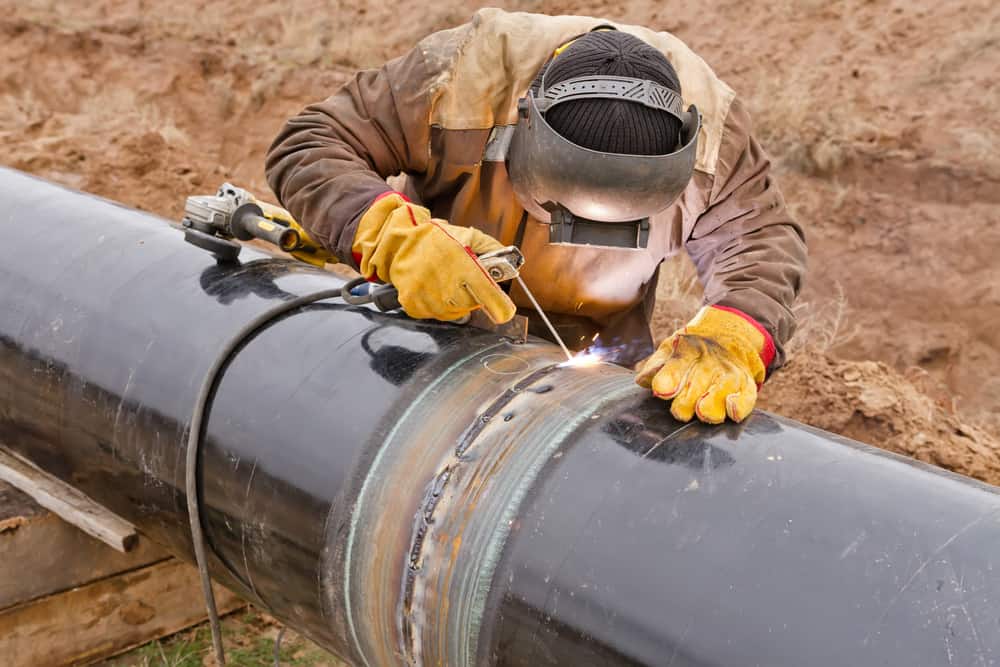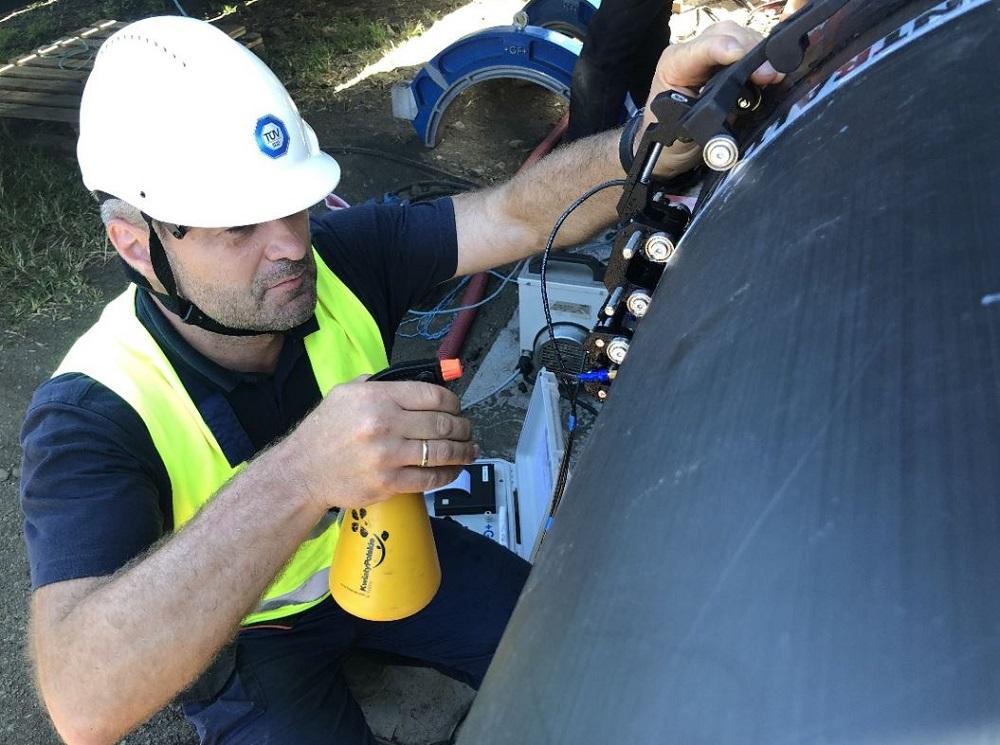Maximize Efficiency: Proactive Pipeline Welding Inspection Strategies
Making Best Use Of Effectiveness: Pipeline Welding Examination Finest Practices
In the realm of pipe building, the integrity and safety and security of welded joints are paramount. Making certain that welding assessments are conducted successfully and efficiently can substantially impact the general quality of the task. By executing ideal methods for pipe welding evaluation, companies can enhance processes, lessen errors, and improve project timelines. From using cutting-edge technology to developing stringent evaluation methods, there are numerous methods that can be employed to optimize efficiency in this important aspect of pipeline building - Pipeline Welding Inspection. The meticulous interest to information required in welding evaluation holds the vital to the long-term resilience and integrity of the pipes, making it a subject of utmost relevance in the market.

Relevance of Effective Welding Assessments
Reliable welding inspections play an important function in making sure the architectural honesty and security of pipes. Correct examinations are necessary to determine any type of flaws, stoppages, or blemishes in the bonded joints that could jeopardize the general stability of the pipeline system. By carrying out extensive assessments, examiners can discover problems early, stopping prospective leaks, ruptures, or failures that can have significant ecological and safety consequences.
Prompt and exact welding evaluations also help in keeping conformity with sector criteria and guidelines. Sticking to these standards is not only a lawful demand but also a necessary measure to assure the dependability and durability of the pipelines. Reliable assessments can contribute to set you back savings by lessening the demand for expensive repairs or replacements due to welding defects that might have been prevented or remedied during the assessment process.
Using Innovation for Assessments
To boost the efficiency and precision of pipe welding inspections, the assimilation of innovative innovations has actually ended up being significantly crucial in ensuring extensive and exact analyses of welded joints. Using modern technology for inspections uses countless benefits, including increased effectiveness, improved precision, and boosted safety procedures. Among the vital technological improvements in pipe welding inspections is making use of automated ultrasonic testing (AUT) systems. These systems can check welds promptly and properly, providing comprehensive data on potential problems or problems within the weld joint. Furthermore, remote aesthetic examination (RVI) devices such as robot spiders outfitted with video cameras permit assessors to accessibility and evaluate difficult-to-reach locations without the demand for extensive disassembly or manual treatment. Furthermore, the execution of digital systems for data analysis and reporting simplifies the evaluation procedure, allowing real-time information analysis and smooth paperwork. By embracing these technical options, pipeline welding evaluations can be conducted much more efficiently, leading to better welds, enhanced overall safety and security, and minimized project timelines.
Establishing Clear Assessment Methods
Developing clear evaluation methods is important for making sure uniformity and reliability in the pipeline welding assessment procedure. These protocols work as a set of guidelines that detail the specific steps, requirements, and approaches to be adhered to during inspections. By clearly defining the assessment procedures, all inspectors associated with the process can comprehend their duties and responsibilities, causing an extra standard and efficient evaluation process.

Routine testimonial and updates to the examination methods are likewise vital to adjust to altering market criteria and needs. By continually refining and enhancing the procedures based on feedback and lessons found out, pipe welding assessments can maintain the best requirements and regulative compliance.
Training and Certifications for Assessors

Training and certifications for assessors are vital in ensuring the competence and effectiveness of individuals tasked with looking after pipeline welding procedures - Pipeline Welding Inspection. Appropriately trained assessors possess the required knowledge and abilities to efficiently evaluate weld top quality, adherence to welding procedures, and conformity with industry criteria and policies
Certifications, such as those supplied by the American Welding Society (AWS) or the American Petroleum Institute (API), verify an assessor's expertise and capacity to carry out inspections to the highest possible requirements. These certifications commonly require extensive training, examinations, and ongoing professional advancement to guarantee that inspectors remain current with the most current advancements in welding modern technology and assessment techniques.
In enhancement to official certifications, constant training programs play a critical role in improving assessors' capabilities. These programs cover a wide variety of topics, including welding processes, flaw discovery, safety protocols, and appropriate codes and pop over here requirements (Pipeline Welding Inspection). By buying thorough training and certifications for examiners, business can maintain the honesty of their pipe welding projects and mitigate the risks connected with low-grade welds
Continuous Enhancement in Assessment Procedures
Structure upon the structure of qualified and experienced assessors, continual improvement in evaluation processes is vital for making sure the continuous high quality and compliance of pipeline welding operations. By implementing a system of continuous renovation, pipe welding examination procedures can progress to satisfy the altering demands of the sector, technical improvements, and regulative demands. This includes frequently examining and evaluating examination treatments, tools, and techniques to determine areas for improvement.
One secret aspect of continual enhancement in article inspection procedures is feedback. Collecting input from examiners, welders, engineers, and various other stakeholders permits an extensive analysis of present practices and the recognition of potential locations for improvement. Additionally, leveraging information and analytics can provide useful understandings into the efficiency of evaluation processes, making it possible for informed decision-making for optimization.
In addition, purchasing training and growth programs for inspectors can make sure that they are equipped with the current knowledge and abilities to perform their tasks efficiently. Constant renovation is a dynamic process that calls for dedication and commitment from all stakeholders to drive quality in pipe welding inspection methods.
Verdict
Finally, making best use of effectiveness in pipeline welding inspections is critical for making sure the quality and safety of framework jobs. By utilizing technology, developing clear procedures, giving appropriate training and certifications for assessors, and constantly enhancing inspection processes, organizations can enhance their procedures and reduce threats. It is critical for industries to focus on effective welding examinations to preserve high criteria and meet governing requirements.
Effective inspections can add to cost savings by lessening the demand for expensive repair work or substitutes due to welding issues that could have been protected against or dealt with throughout the assessment process.
Developing clear assessment methods is essential for making sure consistency click this site and dependability in the pipe welding assessment procedure. By plainly defining the assessment methods, all inspectors included in the procedure can recognize their obligations and duties, leading to an extra effective and standard examination operations.
Clear inspection protocols assist in minimizing the chance of mistakes or oversights throughout the assessment procedure.Structure upon the foundation of licensed and skilled assessors, continual renovation in inspection processes is important for making sure the recurring top quality and conformity of pipe welding procedures.